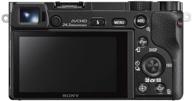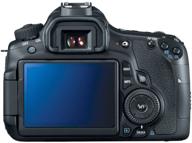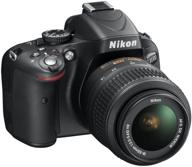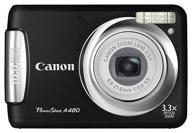
Review on 📷 Sony Alpha 7R IV Full Frame Mirrorless Camera: High Resolution 61MP Sensor, 10FPS with Continuous AF/AE Tracking by Curtis Sherman

The megapixels are worth it!
I have had all A7r cameras including the original, A7rii, A7riii and now A7riv. A7riv is the first major image quality improvement in years! Should I upgrade to 60MP? Definitely, but remember this is still a specialty camera and not an action camera. The camera industry has stagnated in the 24-megapixel space for many years. Canon's R5 and R6 cameras have been pushed to their limits over the past year and the race for new megapixels is back in full swing. Usually, the megapixel wars have been more about bragging rights and marketing than true usability. Noise and image quality are reduced with higher resolution due to the smaller physical pixels. That's also true of the A7riv's 60-megapixel sensor compared to the A7riii's 42-megapixel sensor. However, higher resolution minimizes the noticeable increase in noise (you won't see it unless you're looking at the pixel). Also, the higher resolution helps with sharpness, contrast, and cropping flexibility across the board, giving you a better overall camera. Good: picture quality. As mentioned above, 60MP improves sharpness and flexibility in composition. There's some dynamic range degradation and noisier ISOs. However, since the resolution is much better, the small amount of extra noise is much less noticeable at these resolutions. When used with uncompressed RAW (see below) you get a much better ISO and dynamic range. Clipping. I can't highlight the 60MP cropping ability. More megapixels give you more flexibility to crop, refocus, and recompose your photos when posting. I often change the whole photo composition by extreme cropping of my A7riv files. You can turn full-length portraits into portraits while maintaining excellent sharpness. Realign centered objects to follow the rule of thirds or vice versa. To be able to recompose recordings afterwards is amazing! autofocus. The A7riv has greatly improved autofocus, covering a much larger area of the sensor than the A7riii. The A7riii only added a few more contrast detection points compared to the A7rii, but the A7riv has PDAF points covering almost the entire sensor. With my A7riii, it was very difficult to perform Eye AF on subjects in the corners of the sensor. When your subject isn't quite at the edge of the sensor, the A7riv gives you full autofocus capability, including Eye AF. In addition, autofocus is much faster and Eye AF finds eyes faster and stays on in darker conditions and at longer distances than the A7riii.Battery. The camera still uses the newer Z batteries that come with Sony's new generation of cameras. The Z batteries last twice as long as the old W batteries. It's great to be able to get such a long run time from a camera with such a high resolution. IBIS stabilization. Sony was one of the first major companies to use IBIS in full-frame cameras. 5.5 levels of stabilization is amazing, and handheld photos in low light still look like they were taken from a tripod. I still marvel at this feature sometimes. Tests show that the A7riv has slightly better IBIS stabilization than the A7riii in real-world conditions. Ergonomics/ease of use: Not much has changed since the A7riii. Every year, each new version of the camera gets bigger, thicker and heavier. The joystick feels more comfortable and the shape is more comfortable. The camera itself is a little thicker, it's better to hold it with your hands. There are no obvious flaws here. Cons: Dynamic range. The dynamic range is on par with other cameras of this generation. However, shadow recovery is slightly worse than A7riii. This is mainly due to using the compressed RAW setting when shooting continuously. When using Compressed Raw and Continuous/Burst mode, the camera records in 12-bit instead of 14-bit. If you shoot single shots in uncompressed RAW format, you can get much better dynamic range and shadow recovery. 60MP files are huge and not easy to handle, and this camera is NOT an action camera. But the fact that you can get 10 fps with a 60-megapixel camera even in 12-bit mode is still pretty amazing. Processing Speed: With a 60MP camera, writing to SD cards is even slower than before. As mentioned, you can improve image quality by using an uncompressed RAW file, which DOUBLES the file size from around 59MB to around 117MB. This makes writing to a standard USH-I card EVEN SLOWER at 90/95 Mbit/s. You can't view images after each shot without waiting for the text to disappear. If you're taking multiple shots in a row, you need EVEN SLOWER! You can solve this problem with faster 300Mbps UHS-II cards, but at the time of this review, those cards were VERY EXPENSIVE. Sony really needs to implement lossless compressed RAW files as 60MP will reach its limits and resolution will continue to increase. Speed. This isn't an action cam or sports cam, but it CAN capture some action at 10 fps. As previously mentioned, burst and continuous shooting decreases the quality somewhat. If you are a wedding photographer or a lifestyle/street photographer this will suit your needs. However, if you're shooting sports, dance and movement, you'd be better off with a dedicated action sports camera that can run at high speeds without sacrificing quality, like the A1 or A9. pixel shift. Pixel shifting is a great feature on paper. The sensor moves very slightly, which gives you much better quality images due to the fourfold increase in color information in each pixel. However, you cannot use it without blurring or ghosting. If you don't use it for perfectly static scenes, you'll end up with a blur of sorts. Wind swaying tree leaves or grass, moving cars in cityscapes, every movement ejects the sensor. I've never used this feature sensibly. Also, you need Sony Edge software to stitch images, which just complicates the processing steps. It's a great camera and a phenomenal upgrade. However, it has some limitations. The A7r series has been Sony's flagship camera line for many years. However, we have to keep in mind that this is really suitable for landscape and studio work where lighting conditions are controlled and you don't need to shoot fast action shots. Sony has diversified the A9 and A1 range, with the A9 being a sports camera and the A1 being a dedicated, all-around flagship camera with few compromises. For your everyday photographer who doesn't regularly shoot ballet dancers or basketball games, this should be perfect for their needs. Even professional wedding and street photographers have nothing to complain about. Only the most demanding action photographers who push the envelope will want more.
- This is great
- Some bugs
New products
Comments (9)

Top products in 📷 Digital Cameras

Revamped Sony Alpha a6000 Mirrorless Digital Camera: 24.3MP SLR Camera with 3.0-Inch LCD and Power Zoom Lens

103 Review

Canon EOS 60D: 18MP CMOS Digital SLR Camera Body - Your Next Photography Companion

125 Review

Nikon D5100 Digital SLR Camera with 18-55mm VR Lens - High Resolution 16.2MP

172 Review

Canon PowerShot A480 camera, black

108 Review














